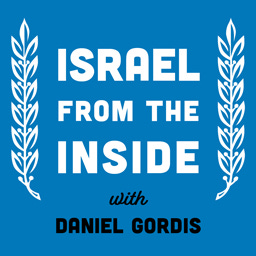Could it really happen? A nation holding its breath, almost afraid to hope.
Description

As we’ll explore in greater detail tomorrow (October 7 is Yom Tov Sukkot, so we can’t post then), the confluence of October 7 this week and Simchat Torah next week, along with what may be happening on the hostage front, has many people very hopeful, but terrified of being disappointed, once again.
Perhaps because we do not yet know what is going to happen, and whether, as Netanyahu has promised, the hostages will be home during Sukkot, this is the moment to reflect on these past two terrible years: how it started, what we’ve learned, where we will be if this is really “over” (whatever that might mean), and what enormous issues an Israel-not-at-war is going to have to tackle.
We’ll start that tomorrow and explore it further in the next few weeks.

Is the longest war in Israel’s history about to end? I can remember many moments in which this entire nation held its breath, waiting to see if something was going to happen, but I don’t recall anything like this—a desperate wish to be able to hope, and a terrible fear of being disappointed again.
Despite that fear, hope is in the air. For all sorts of reasons. The hostages possibly coming home is the main one. But not the only one.
Shortly after Yom Kippur, I received these videos of the conclusion of the public Tel Aviv Yom Kippur service conducted by Rabbi Joe Wolfson (who was on the IFTI podcast just about a year ago). If you look at the videos carefully, you’ll see some “classically” religious people there, but also many non-religious people. Men without kippot, women in pants, men and women sitting together, no mechitzah, and thousands of people at Kikar Atarim (not far from the Tel Aviv beach and near the iconic Gordon pool, if you know it …) — proving that Israelis of all (ok, most) walks of life can spend the year’s holiest day together.
Rabbi Wolfson, as our listeners may recall, is the dynamic, visionary and charismatic rabbi who leads Ben Yehudah 126, a classic, iconic Tel Aviv synagogue that is experiencing an extraordinary revitalization. Through Ben Yehudah 126 and his other organization, JLIC TLV Community, Rabbi Wolfson is having an enormous impact on the young, religious community in Tel Aviv. (He’s the person standing on the chair in the video at the very top of this post). The videos show what’s possible with passion, drive, warmth and creativity—Tel Aviv, the very symbol of secular Israeli life, with an outdoor service (these videos were filmed about ten minutes after the Fast ended, but note how many people are still there) attended by thousands, who end their 25 hours of fasting and worship with these three elements: (a) the prayer for the hostages, also above, (b) the classic prayer for those in captivity, and (c) Hatikvah.
The sign above, advertising the public worship, reads as follows:
KIPPUR IN ATARIM SQUARE
This year, we’re all praying together, more than any other year—for our soldiers, for the hostages, for the country, and for ourselves—together.
And here’s what unfolded at the very end of Yom Kippur:
Given what happened in Tel Aviv two years ago with outdoor services, who wouldn’t manage to feel some hope?
If you would like to share our conversation about what Israelis are feeling and expressing at this unprecedented moment in our history, we invite you to subscribe today.

The morning after Yom Kippur, I walked over to a bookstore to pick up a book I’d heard about over the holiday. On the way, on the sidewalk of Emek Refa’im (one of the main drags in south Jerusalem), it was literally hard to walk on because of all the booths that had suddenly sprung up … but no one pushed, no one complained.
Perhaps, given what we’re witness to around the world and what’s happening to to many Jews who are publicly Jewish, people understood that a sidewalk crowded because of these stands is actually something to celebrate …







